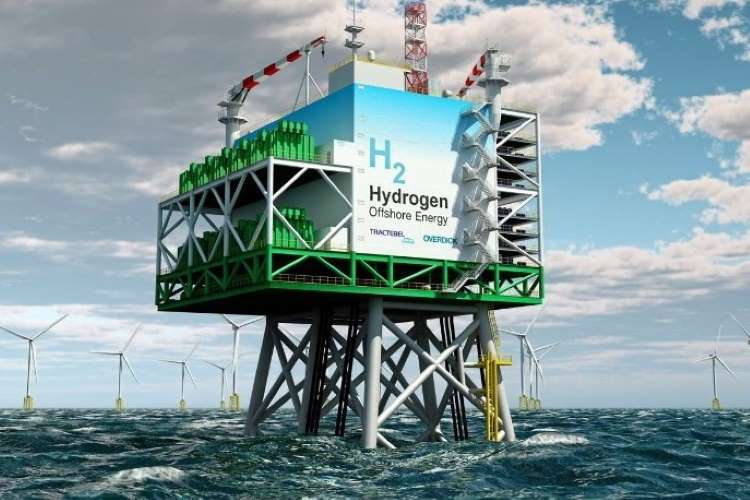
The journey toward a sustainable future has placed green hydrogen at the forefront of global discussions as a promising clean fuel. However, several developments across various corners of the world have shed light on the complexities, challenges, and potential pathways for the widespread adoption of green hydrogen. These insights offer a nuanced perspective on the future of green hydrogen, balancing the enthusiasm for its potential with a sober assessment of the hurdles it faces.
In Pau, France, the deployment of hydrogen-powered buses was heralded as a pioneering step towards cleaner public transportation. Since 2019, the city operated eight fuel-cell buses on its Fébus line, marking a significant investment in hydrogen technology. However, the reality of maintaining this fleet has been fraught with difficulties, including frequent breakdowns and a substantial increase in hydrogen fuel bills.
READ | From Delhi’s haze to global crisis: Why lung health matters more than ever
Operational challenges and the high cost of hydrogen, exacerbated by the inefficiency of “well-to-wheel” energy conversion compared to battery-electric alternatives, have prompted the city to reconsider its strategy. Pau’s operations manager for transport, Jérémie Neillo, cited these issues as pivotal reasons for shifting focus towards electric buses for future fleet expansions.
Across the English Channel, the UK’s ambitious plan to test hydrogen heating in 1,800 properties in Redcar faced cancellation due to a lack of adequate low-carbon hydrogen supply. This decision underscores a critical challenge in the hydrogen economy: the availability of green hydrogen. Despite the UK government’s ongoing interest in hydrogen’s role in heating, the cancellation reflects broader concerns about safety, public consent, and the feasibility of transitioning to hydrogen fuel in domestic settings.
The International Energy Agency (IEA) highlights that the global push for green hydrogen is being hindered by rising costs and lagging policy support. Although there is considerable momentum behind low-emission hydrogen projects, the actual production of green hydrogen remains less than 1% of total hydrogen production. The IEA’s call for support schemes to produce hydrogen, stimulate demand, and streamline licensing and permitting processes underscores the need for a coordinated approach to overcome these obstacles.
The way ahead
The experiences of Pau and the UK, coupled with the IEA’s findings, illustrate the multifaceted challenges facing green hydrogen. To harness its potential, a comprehensive strategy that addresses supply, demand, infrastructure, and international cooperation is essential. Investments in electrolysis technology, carbon capture, and renewable energy sources are critical to increasing green hydrogen production. Simultaneously, policies that stimulate demand for hydrogen in various sectors, including transportation, heating, and industrial processes, are necessary to build a viable market.
Moreover, addressing the public’s concerns about safety and the economic implications of transitioning to hydrogen fuel is paramount. The development of reliable hydrogen sensors, as mentioned in the UK’s heating trial debacle, represents one of the many technological and regulatory hurdles that must be overcome.
The transition to a hydrogen-powered world necessitates international cooperation. Knowledge sharing, technology transfer, and collaborative infrastructure development are vital. Developed nations with established hydrogen expertise can support developing countries in leapfrogging outdated technologies and adopting green hydrogen solutions. Additionally, international agreements on safety standards, regulations, and trade will be crucial for creating a stable and efficient global hydrogen market.
Green hydrogen is not the only contender in the clean energy race. Battery-electric vehicles, renewable natural gas, and advanced biofuels are all vying for a place in the sustainable future. A balanced approach is crucial. While hydrogen excels in specific areas like long-distance trucking and heavy industry, relying solely on it could overlook the strengths of other options. A diversified clean energy portfolio, tailored to address the specific needs of different sectors, will likely prove more effective than a singular focus on hydrogen.
The slow start for green hydrogen should not deter its development. History offers examples, such as the rapid production of fighter planes during World War II and the expansion of China’s high-speed rail network, which demonstrate the feasibility of accelerated technological deployment in response to pressing needs. Similarly, the global effort to address climate change may necessitate an “emergency-like deployment” of green hydrogen technology.
The future of green hydrogen as a clean fuel is contingent upon navigating the intricate web of technological, economic, and policy challenges that currently hinder its development. While the pathway is fraught with obstacles, the concerted efforts of governments, industries, and communities can unlock the potential of green hydrogen to play a pivotal role in the transition to a sustainable energy future. The lessons learned from early adopters and the strategic direction provided by international agencies can guide the global community towards a hydrogen-powered future, marking a significant step forward in the fight against climate change.
Anil Nair is Founder and Editor, Policy Circle.


